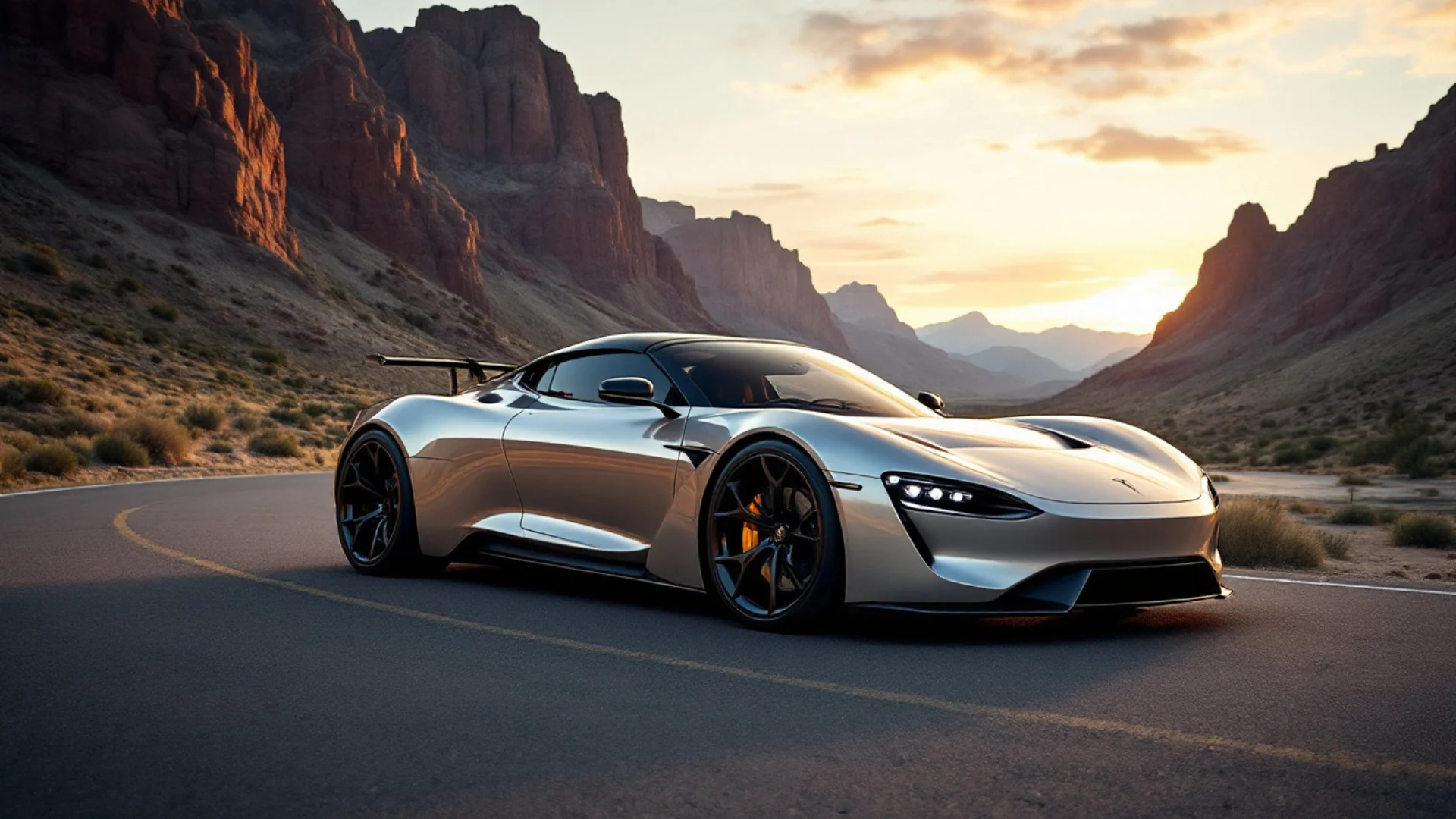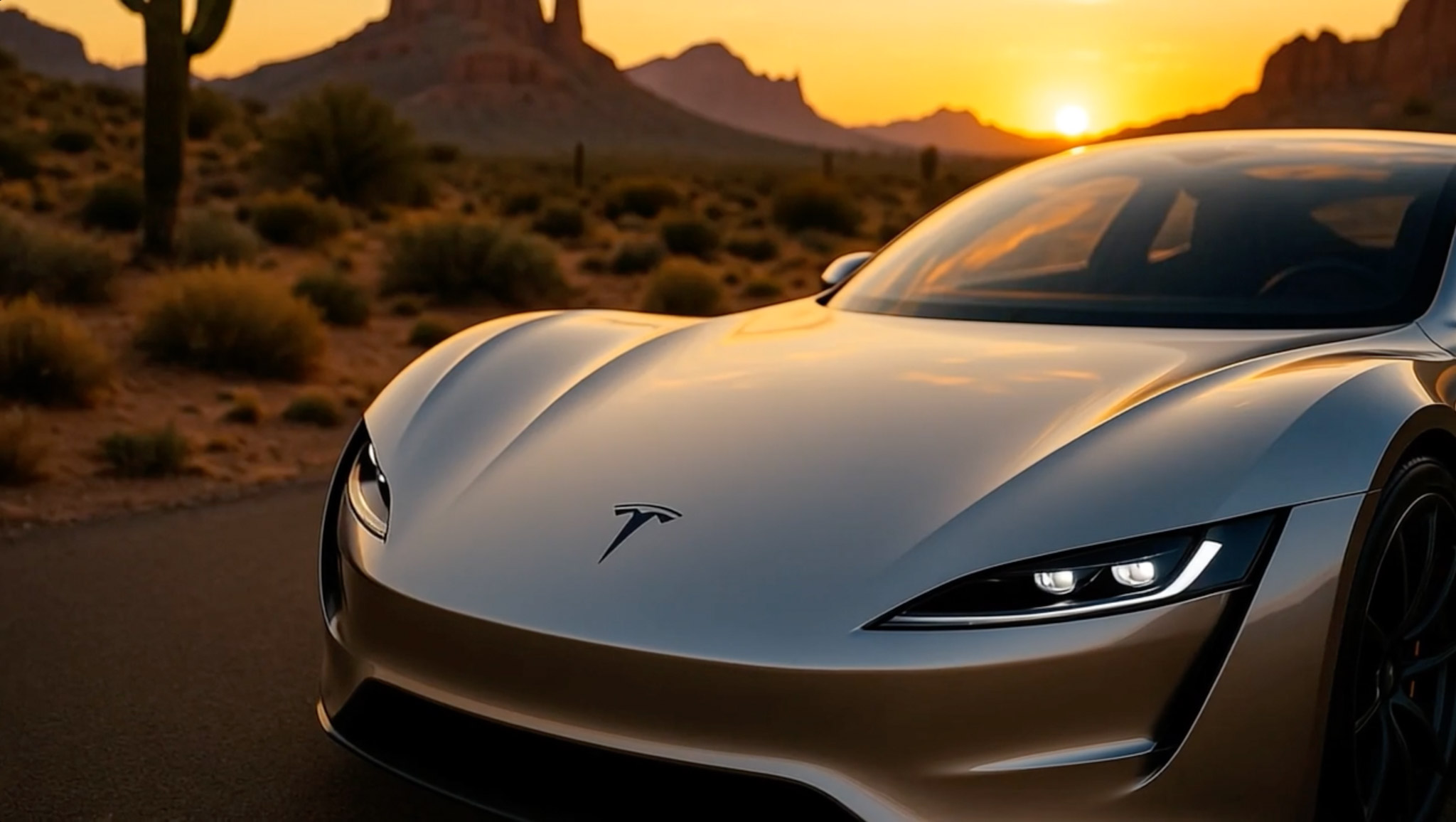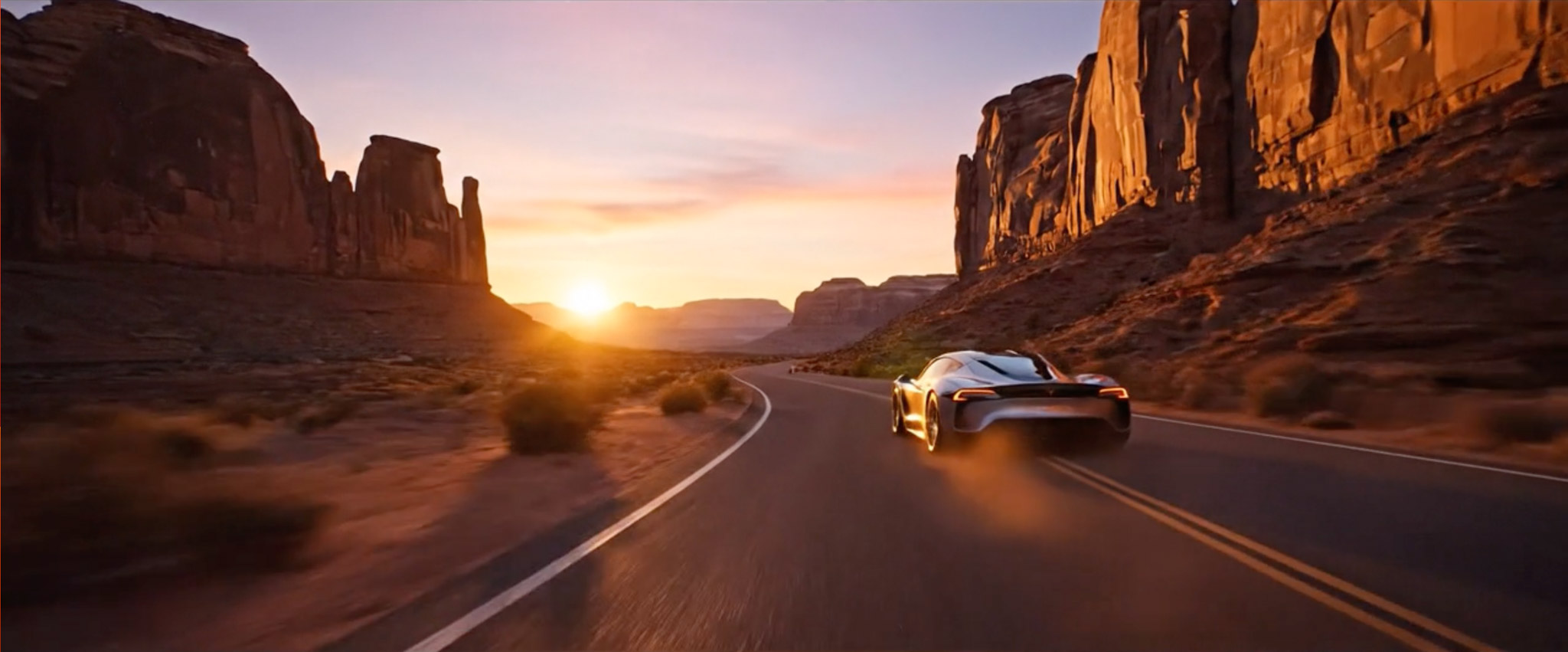

Start with a photo you love. In my case, it was a Tesla Roadster in the desert. But this works with any subject: a product, a person, a landscape.
The image is your raw ingredient.

Runway is your generator.
Think of Runway as the chef in the kitchen. It knows how to cook, but it needs a recipe.

This is where most people go wrong. They type a flat prompt directly into Runway, something like:
❌ “Car driving in the desert.”
That’s like telling a chef “make food.” You’ll get something, but it won’t be refined.
Instead, use ChatGPT to write the recipe first. For example:
✅ “A drone drifts silently through a veil of desert mist at dawn. The Arizona landscape is barely visible, softened and obscured by the pale fog that clings to the red cliffs and cactus silhouettes. As the camera floats forward, the headlights of a Tesla slowly pierce through the haze, beams stretching and scattering in the mist. The drone holds a steady, ethereal glide, capturing a dreamlike moment where the desert feels otherworldly and vast. The mood is moody, mysterious, and cinematic — a balance of stillness and anticipation as the car emerges from the fog.”
See the difference? Instead of a generic request, you now have a cinematic blueprint that Runway can actually bring to life.
So the golden rule: AI works best with AI. Always let ChatGPT write the recipe before handing it to Runway.
Now take that cinematic prompt and paste it into Runway.
Once you land on something you like, you can upscale it—even to 4K. That way, your experiment is not just a concept, but ready for real-world use.

Want to go further? You can create a small project in ChatGPT where you upload:
That way, GPT learns your style and keeps the quality consistent.
This workflow is perfect for:
I use it weekly in production work. It’s simple, affordable, and the tools are available to anyone.
The steps above are your “basic kitchen setup.” If you want the Michelin-star version—where you control camera moves, lighting setups, even multi-scene sequences—you’ll want to dive into JSON prompts.
We’ve put together a guide that shows you exactly how to structure these prompts, field by field, so your videos look like $100,000 productions which we'll share very soon.
There are countless ways to do AI video. This one just happens to be the fastest and easiest I’ve found for turning a still into cinematic motion. So don’t overthink it—pick a photo, follow these steps, and start creating.
And if you try it—whether it’s a full car chase or just a wheel carving into the sand—send it my way. I’d love to see what you come up with.

